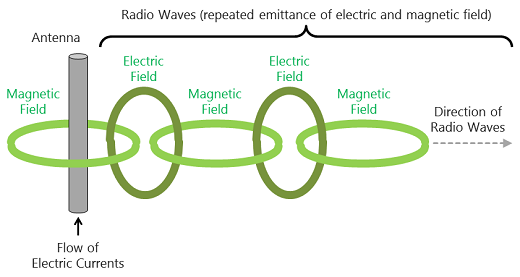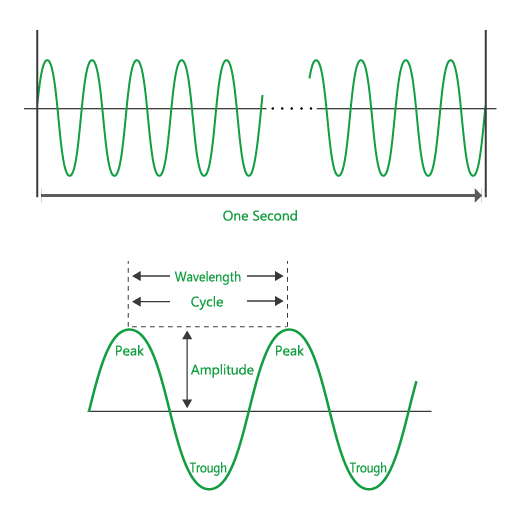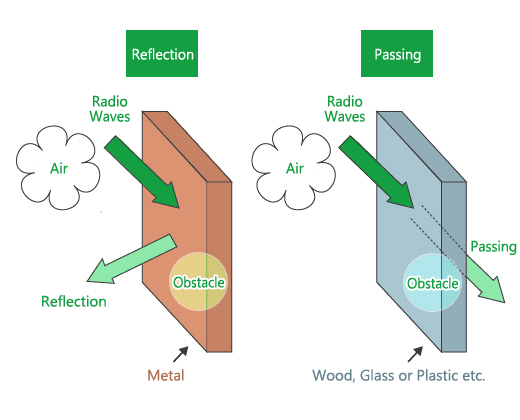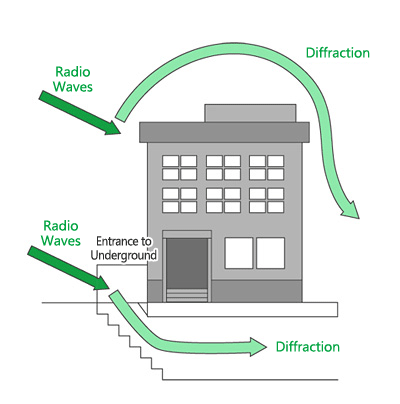What are radio waves?
- Electricity and
Magnetism - Facts about
Radio Waves - Reflection and Passing
of Radio Waves - Diffraction of
Radio Waves
Radio waves have existed ever since the birth of the universe. Human beings discovered the existence of radio waves and have explored ways to use them. The antenna is one of the fruits of such studies.
Radio waves embrace both electric and magnetic features. As shown in the diagram below, region in space consisting of electricity are called electric fields while region in space consisting of magnetism are called magnetic fields.


- Radio waves are energy like the human voice. However, unlike the voice which needs air to be transmitted, radio waves can be transmitted even in a vacuum state.
An important term associated to radio waves is frequency. Frequency is the number of waves repeated in one second, and is expressed with the unit - Hertz (Hz).
For example, 60Hz indicates that a wave (one wave consists of one peak and one trough) oscillates 60 times in one second.

Other terms associated to radio waves are wavelength, amplitude and cycles.
| Item | Unit | Details |
|---|---|---|
| Frequency | Hz | The number of waves oscillated in one second |
| Wavelength | m | Wavelength = Velocity of Light / Frequency The distance between one peak and the next |
| Amplitude | V,A | The height of a wave The distance between a wave's peak and trough is double the amplitude. |
| Cycle | second | The time necessary to complete a single wavelength (cycle) |
While radio waves generally propagate towards a single direction, they sometimes reflect when they come across obstacles such as buildings.
Whether the radio wave reflects or not depends on the character of the obstacle. For example, radio waves are reflected on metal which has high electrical conductivity. On the other hand, radio waves pass through objects that have high electrical resistivity such as plastic.

Another fact is that radio waves weaken gradually. Also, in urban areas, radio waves reflect repeatedly (becoming "reflected waves") and scatter all over the place since there are many obstacles such as walls of buildings, railways and elevated roads.
Aside from reflecting on and passing through objects, radio waves can work their way around obstacles such as buildings. This is called diffraction.

Lower frequencies tend to make radio waves diffract, while higher frequencies tend to make radio waves propagate in a single line.
